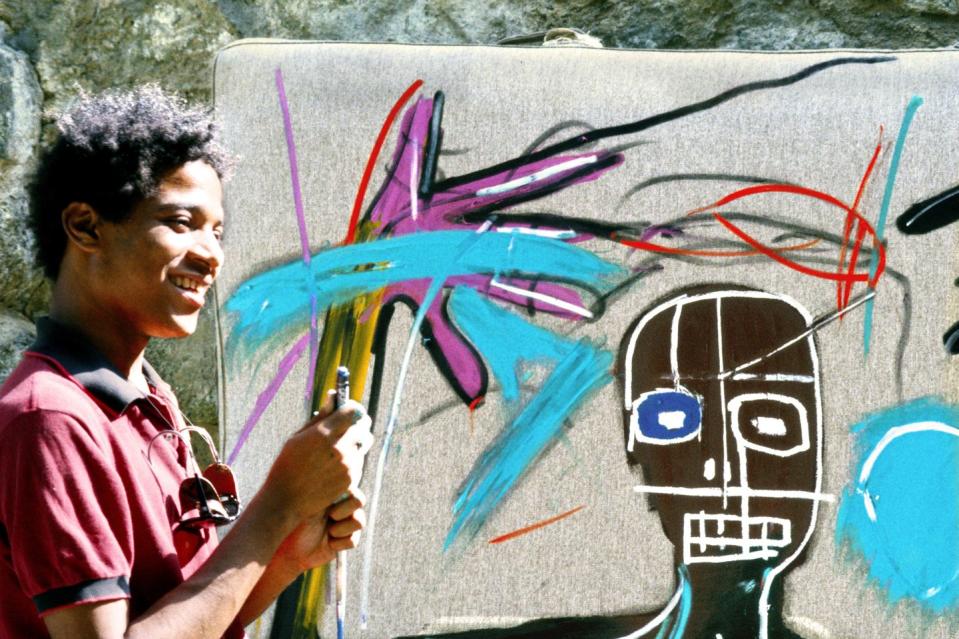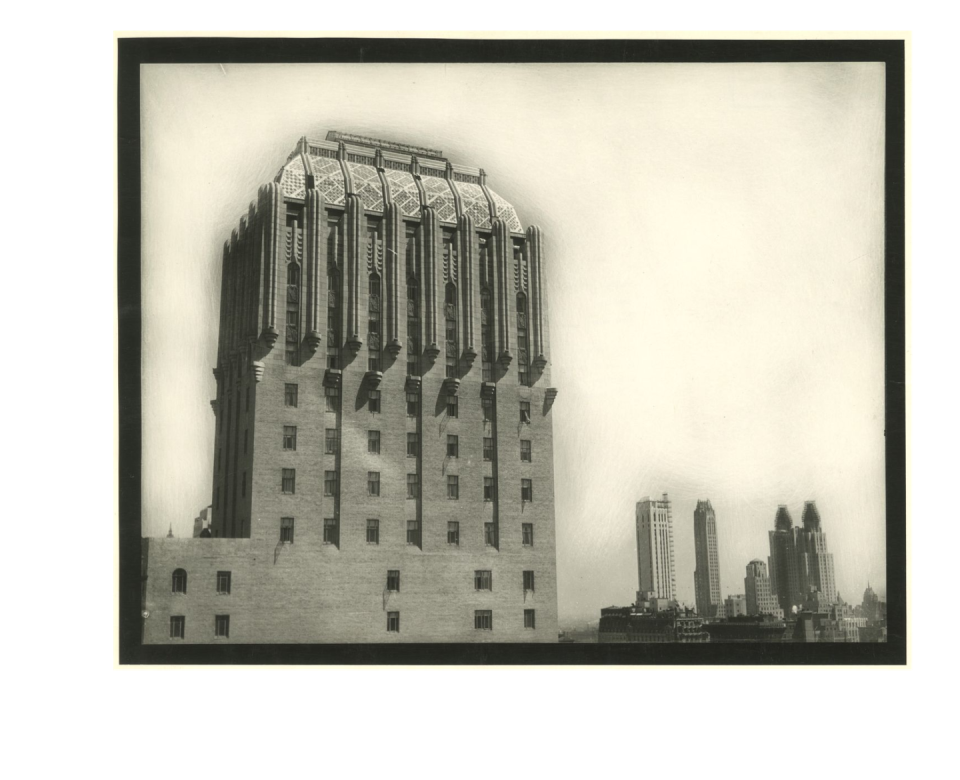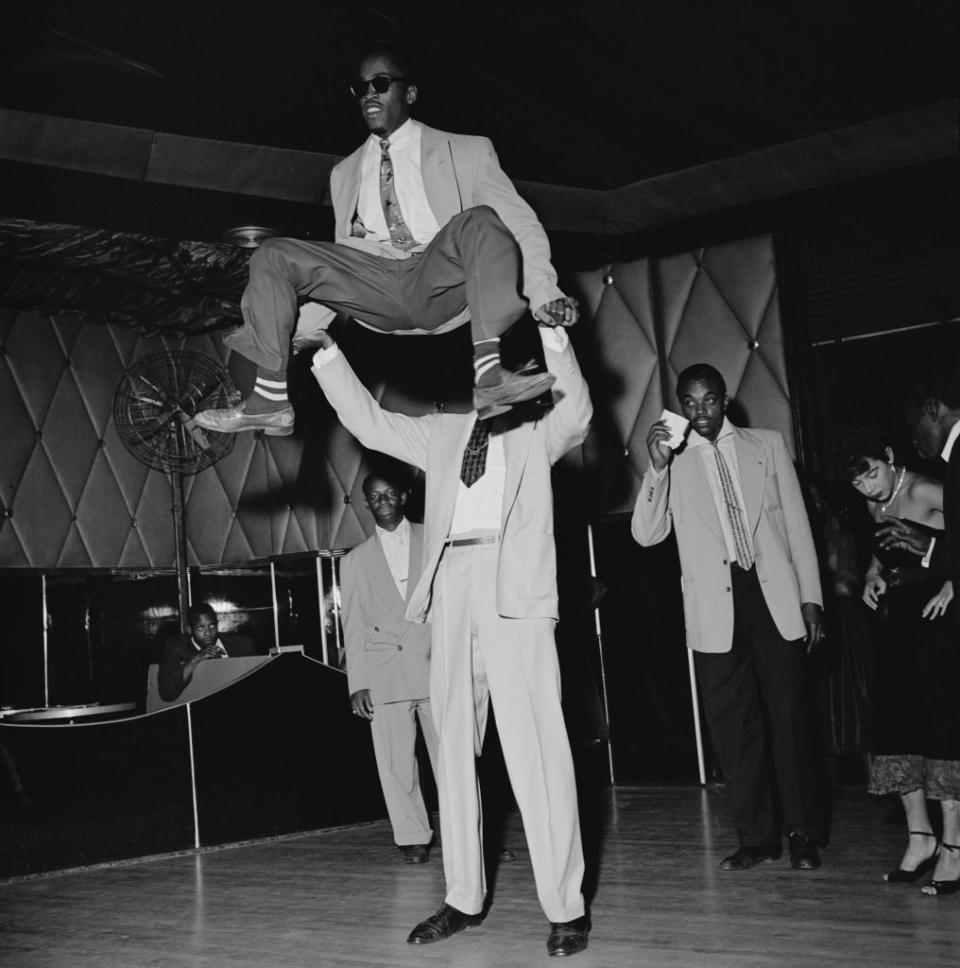5 Black Creatives Who Helped Shape American Art, Architecture, and Design
- Oops!Something went wrong.Please try again later.
- Oops!Something went wrong.Please try again later.
"Hearst Magazines and Yahoo may earn commission or revenue on some items through the links below."
Black creatives have long been influencing American art, design, and culture with their talent, ingenuity, and unique perspectives. Unfortunately, so many Black artists, architects, and designers have been silenced or exploited because of the color of their skin for most—or even the entirety—of their careers. Our nation has missed out on the opportunity to know and celebrate their skills. And that needs to change. We asked Fabiola Jean-Louis, an interdisciplinary artist, and Michael Henry Adams, a historian and author, about Black creatives the world needs to know.
The creatives highlighted here are not new to American art and design history itself—you may even know these names already—but most have not been properly celebrated by mainstream institutions or publications until too late, if at all. Their stories and contributions to society are imperative to the art and design industries and deserve to be known by all, not just by some.
Treating Black Art as More than Just a Fad
Jean-Louis is based in Brooklyn, and her multidisciplinary series "Rewriting History" has firmly established her in the art world. This beautifully haunting collection of photographs and paper gowns has not only allowed Jean-Louis to explore her own identity as a Haitian-born Black woman in America, but it has also sparked conversation about the racial and political climate in our world today.
“'Rewriting History' was a way for me to challenge norms, what we think is beautiful, and who we think should be wearing what; it was a way for me to speak about injustice and trauma without the blood and gore,” Jean-Louis says. “As I was beginning this work [in 2015], all these things were happening socially with police brutality and other injustices, and we were all seeing bodies of Black people dying on the streets. That reality and truth was there, and it has been there for a long time. I needed to have this discussion in a different way because we’ve become desensitized to the death and gore of Black people in our country.”
Jean-Louis says she figured it would be wiser for her to use beauty to draw attention to injustice for this project, using it as a platform into which to insert difficult historical stories. And thus, "Rewriting History" was born.
The photographer and artist combined her two talents to create this one-of-a-kind art collection featuring gorgeous photos of Black women dressed in gowns usually reserved for 15th- to 19th-century white European royalty. The photographs look like they could be oil paintings, each one juxtaposing visual beauty with horrific details of the time period regarding how Black people in the Western world were being treated.
Jean-Louis's series has been featured in exhibitions all over the country since 2015. “I’ve learned through this work that art really is a form of activism,” she says. “I’m very shy by nature and don’t like crowds. I’ve never been the type to march on the front lines of a protest, but I knew I needed to answer the cause in some way. It’s reassuring to feel that a Black artist was able to have a voice and people actually wanted to hear what she had to say.”
But like many talented Black artists and creatives before her, having a voice in the industry still feels more like a privilege awarded to some rather than a right for all. She says Black art is still often treated as a novelty rather than an integral part of our country’s mainstream art culture.
“When we are getting attention, the art world is dealing with it as a fad, in that right now there’s the notion that Black art is just a thing to acquire, and it will come and go,” she says. “It needs to last, and it needs to be valued as other artists are. There’s a thin gray line with acquiring work because you really believe in it and support it versus exploiting it, which is a whole other issue Black artists have to deal with.”
The work of Jean-Michel Basquiat, the 1980s neo-expressionist, is a prime example, according to Jean-Louis. As the face of the 1980s American Punk and graffiti movement, Basquiat was one of the most commercially exploited artists of his day, facing threats from art dealers and others stealing both finished and unfinished works from his studio in Manhattan.

“It wasn’t until he died many years after that we started to see his work gain national attention, and it’s similar for many Black artists who are now on the map,” she says. “Many of them are in their seventies and have been working so long without any attention until right now.”
This sentiment rings true for many other Black creatives in this country whose works have greatly contributed to our society. So many Black artists, architects, and interior designers are just now getting the mainstream spotlight they deserve—if any at all—and many posthumously.
The Exception and the Rule
According to design historian Emily Eerdmans, Julian Abele was the first Black architect to attend the renowned French architecture school École des Beaux-Arts. Even though he attained top credentials for his field, he often did not get credited for his work—most likely due to the color of his skin, says Eerdmans.
While not the first Black architect licensed in America, Abele was arguably the most prominent of his time, working at the prestigious (and otherwise all-white) firm Horace Trumbauer, where he contributed to more than 250 projects, including Harvard University’s Widener Memorial Library, an array of Gilded Age manses in New York City and surrounding areas, and much of Duke University’s campus.
It wasn’t until 1986—nearly 40 years after his death—that Abele began to be more widely recognized for his extensive work on the formerly all-white university campus. While his legacy had likely been heralded by some university historians and faculty, Susan Cook, a senior at Duke (and Abele’s grandniece), helped establish the architect’s name on campus as an honorable contributor to its striking architecture. His portrait became the first of a Black person at the university to be hung in the foyer of the Allen Building—one of his designs—later that year, and in 2016, Duke’s main quad (which was designed by Abele) was renamed in his honor.

If Abele was the rule of a 20th-century Black architect (like him, many other talented Black architects of his day found success in the shadows, designing buildings they knew they wouldn’t be recognized for or even allowed to enter), the legendary Paul Revere Williams was certainly the exception. But his success did not come easily.
“Williams started out working for a white architectural firm, and when he opened his own, he came into big trouble and had to do what I so consistently see in the day, and that is: come up with a gimmick,” says Michael Henry Adams, historian, author, and design aficionado.
Adams explains that prospective clients would come into Williams’s office not knowing he was Black and would want to leave once they discovered he was. Williams would respond by saying that he was "actually very busy at the moment but would still be interested in learning more about the potential clients’ needs and creative vision," Adams says.
“Even though people would tell him he wasn’t capable once they found out he was Black, they would often still explain their project to him anyway,” Adams says. “[Williams] taught himself how to draw upside down, so that as they were describing their vision [from across the table from him], he would bring it to life before their eyes. It caught people’s attention, and many would end up hiring him. After awhile, he had done so many things, and he was clearly so immensely talented, he was able to get the opportunities he did.”

From designing Frank Sinatra’s Hollywood home—complete with a bed that would jet out to the balcony upon pressing a button, per Sinatra’s request—to remodeling the iconic Hotel Ambassador in Beverly Hills, Williams became a pioneer for aspiring Black architects and designers everywhere, and his legacy continues on to this day.
While Williams’s daughter, Norma Harvey, became a respected interior designer who worked with her father on the interiors of high-profile projects, interior design seemed even harder for Black creatives to break into than architecture. This also made it difficult for affluent Blacks to hire Black interior designers. Adams notes that Vertner Woodson Tandy, the acclaimed Black architect, designed Black entrepreneur and aristocrat Madame C. J. Walker’s beautiful Villa Lewaro, while its interiors were designed by a white man.
“One of the greatest challenges of my life is trying to search and sort out Blacks who worked in interior design,” Adams says, who is currently working on a book about the subject. “It’s a tremendously difficult task finding photographs of rooms or just people in general.”
For example, Adams says while he discovered Abele had an interest in interiors, and became known for such among wealthy white circles in 1920s Philadelphia, he was unable to discover any other information about Black interior designers in the first half of the 20th century for quite some time.
“Now, we have the miracle of being able to do searches in digitized newspapers and, as a consequence, I have, by using the words negro designer, decorator, or interior decorator, found dozens of Black interior designers who were established as early as 1910,” Adams says. “There’s still a lot of work left to do on assessing their work and how good it was.”
Thankfully, his countless hours of research have yielded some fascinating results, specifically regarding two designers: Harold Curtis Brown and Sogata. “This knowledge and these men's legacies were already there, and some people are already aware, but the frustrating thing is that I have yet to find enough about them,” Adams says.
A Disappearing Act
Harold Curtis Brown was an interior designer and graphic artist who studied at the Boston School of Fine Arts and the New School of Design. He spent some time decorating in Paris, studying sand art under sculptor Lorenzo Harris, and running an art shop in D.C. before settling in New York City. According to Adams, he designed the interiors of some of the most iconic Harlem Renaissance-era nightclubs, like the Cotton Club (before it moved to Times Square), Tilly’s, and the Saratoga Club.
While much of his work was done in Harlem and the Bronx, Adams says Brown gained some high-profile white clients as well, most notably the job of designing the interiors of Central Park South’s Hotel Navarro, which eventually became one of the first Ritz-Carlton hotels and now serves as a luxury co-op.


Sogata—Adams says he refused to give another name—came on to the New York design scene around the same time as Brown, after success reportedly alluded him in London, Paris, Hawaii, Miami, and Hollywood. He, too, began to specialize in nightclubs, and one of his most famous works is the Savoy Ballroom, which Adams says prompted white decorators to visit to Harlem.
“There were signature things he did that just became very characteristic in his work: He loved bronzed and peach-colored mirrors, indirect lighting, and these lights that would have fins of curved glass emerging out of the shade so light would emanate,” says Adams. “He loved oval and curved bars. I’m fairly certain that, one day, I’ll be able to prove that the interiors of the Lenox Lounge was of his design because of this.” Adams says he also speculates that Sogata designed the interiors of boxer Joe Lewis’s eponymous Harlem bar (built by Vertner Woodson Tandy) for similar reasons.

“The tragedy of it all is that there’s not a trace left,” Adams says. His extensive research came to a sudden halt when he discovered both men disappeared into thin air after 1938. While he has yet to find closure on Sogata, Adams eventually found a possible explanation for Brown's disappearance.
The historian came across an article written by a columnist for a local Harlem paper who wrote about running into his friend Brown one day and learning the designer had moved to “the poshest address on Park Avenue.”
“He has left us; Harold has crossed over,” the article reads. “Gentlemen may prefer blondes, but Harold prefers Do-Re-Mi.” Adams explains this meant Harold Curtis Brown decided to pass as white so he could make more money, which has made it difficult to connect him to any work after the late 1930s. Since Sogata disappeared so similarly to Brown, Adams suggests he, too, may have decided to try to pass as white.
“There have always been Black decorators and architects, and my job right now is to find more of them,” Adams says. “My book, Style and Grace, was the first I know of that exclusively dealt with houses inhabited by Black people. I was delighted to be able to feature work from talents like Sheila Bridges and Cheryl Riley.”
While the stories and works of many talented Black creatives have long been hidden from mainstream avenues, Adams is diligently working to uncover the fascinating stories of talented Black pioneers of interior design. Jean-Louis uses the platform she has been given with the help of the determined Black artists before her to champion justice and spark discussion amongst all who witness her work. And we should all work to ensure that today's inspiring Black artists, architects, and designers are properly revered and that they may actually see their illustrious legacy begin within their lifetimes.
You Might Also Like

